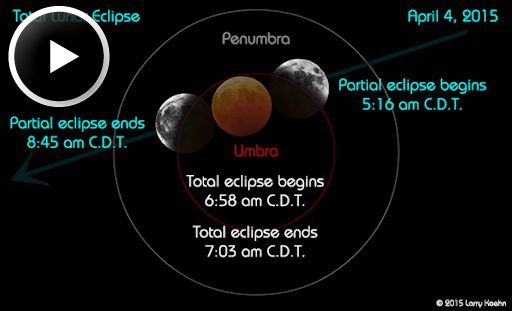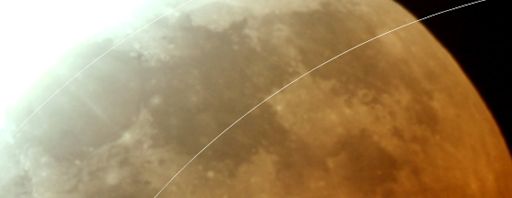From Spaceweather.com.
On Saturday morning, April 4th, the shadow of the Earth will fall across the Moon, turning the lunar disk a beautiful shade of celestial red. The total eclipse will be visible from the Americas, the Pacific Ocean, Australia, New Zealand and eastern parts of Asia. Click to preview the Moon's colorful transformation:
Some total eclipses last for more than an hour. In this case, however, totality spans just 4 minutes and 43 seconds—a result of the fact that the Moon is skimming the outskirts of Earth's shadow rather than passing centrally through it. The brevity of the eclipse highlights the importance of watching the clock: Be outside no later than4:58 AM PDT (11:58 UT) to witness the red Moon.
Why red?
A quick trip to the Moon provides the answer: Imagine yourself standing on a dusty lunar plain looking up at the sky. Overhead hangs Earth, nightside down, completely hiding the sun behind it. The eclipse is underway. You might expect Earth seen in this way to be utterly dark, but it's not. The rim of the planet looks like it is on fire. As you scan your eye around Earth's circumference, you're seeing every sunrise and every sunset in the world, all of them, all at once. This incredible light beams into the heart of Earth's shadow, filling it with a coppery glow and transforming the Moon into a great red orb when viewed from Earth.
Red is not the only color, however. Sometimes observers spot a subtle band of turquoise:
This is the "ozone fringe." Atmospheric scientist Richard Keen of the University of Colorado explains: "Most of the light illuminating the Moon passes through the stratosphere, and is reddened by scattering. However, light passing through the upper stratosphere penetrates the ozone layer, which absorbs red light and actually makes the passing light ray bluer." This can be seen using binoculars or a small telescope as a turquoise border around the red. Be alert for both colors on Saturday morning!


No comments:
Post a Comment